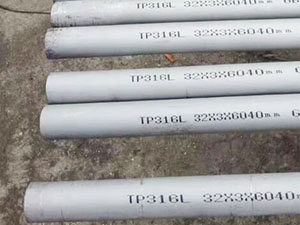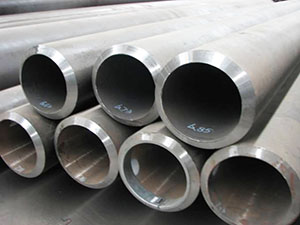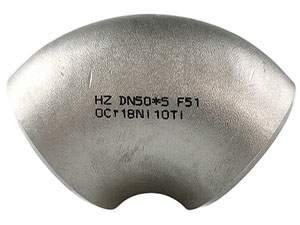ASTM A 240, A 276, A 312
UNS S31000 / UNS S31008
DIN 1.4845
What forms of 310/310S Stainless Steel are available?
• Sheet
• Plate
• Bar
• Pipe & Tube
• Fittings (i.e. flanges, slip-ons, blinds, weld-necks, lapjoints, long welding necks, socket welds, elbows, tees, stub-ends, returns, caps, crosses, reducers, and pipe nipples)
• Weld Wire

310/310S Stainless Steel Overview
Stainless steel 310/310S is an austenitic heat resistant alloy with excellent resistance to oxidation under mildly cyclic conditions through 2000° F. Its high chromium and nickel contents provide comparable corrosion resistance, superior resistance to oxidation and the retention of a larger fraction of room temperature strength than the common austenitic alloys like Type 304. Stainless 310 is often used at cryogenic temperatures, with excellent toughness to -450° F, and low magnetic permeability.
**As you can see below, Grade 310S is a low carbon version of grade 310. 310S is less prone to embrittlement and sensitization in service.
310 UNS S31000 Chemical Composition, %
|
Cr
|
Ni
|
C
|
Si
|
Mn
|
|
24.0-26.0
|
19.2-22.0
|
.25 Max
|
1.50 Max
|
2.00 Max
|
|
P
|
S
|
Mo
|
Cu
|
Fe
|
|
.045 Max
|
.03 Max
|
.75 Max
|
.50 Max
|
Balance
|
310S UNS S31008 Chemical Composition, %
|
Cr
|
Ni
|
C
|
Si
|
Mn
|
|
24.0-26.0
|
19.2-22.0
|
.08 Max
|
1.50 Max
|
2.00 Max
|
|
P
|
S
|
Mo
|
Cu
|
Fe
|
|
.045 Max
|
.03 Max
|
.75 Max
|
.50 Max
|
Balance
|
What are the characteristics of 310/310S Stainless?
• Oxidation resistance to 2000° F
• Moderate strength at high temperature
• Resistance to hot corrosion
• Strength and toughness at cryogenic temperatures
Typical Applications for 310/310S Stainless
• Kilns
• Heat Exchangers
• Radiant Tubes
• Muffles, retorts, annealing covers
• Tube hangers for petroleum refiing adn steam boilers
• Coal gasifier internal components
• Saggers
• Furnace parts, conveyor belts, rollers, oven linings, fans
• Food processing equipment
• Cryogenic structures
Fabrication with Stainless 310/310S
Type 310/310S is readily fabricated by standard commercial procedures. In comparison to carbon steel, stainless steels are tougher and tend to work harden rapidly.
Type 310/310S can be welded using all of the common welding processes.
Mechanical Properties
Representative Tensile Properties
|
Temperature, ° F
|
Ultimate Tensile Strength, ksi
|
.2% Yield Strength, ksi
|
Elongation Percent
|
|
70
|
80.0
|
35.0
|
52
|
|
1000
|
67.8
|
20.8
|
47
|
|
1200
|
54.1
|
20.7
|
43
|
|
1400
|
35.1
|
19.3
|
46
|
|
1600
|
19.1
|
12.2
|
48
|
Typical Creep-Rupture Properties
|
Temperature,° F
|
Minimum Creep 0.0001%/hr, ksi
|
100,000 Hour Rupture Strength, ksi
|
|
12000
|
14.9
|
14.4
|
|
1400
|
3.3
|
4.5
|
|
1600
|
1.1
|
1.5
|
|
1800
|
.28
|
.66
|






